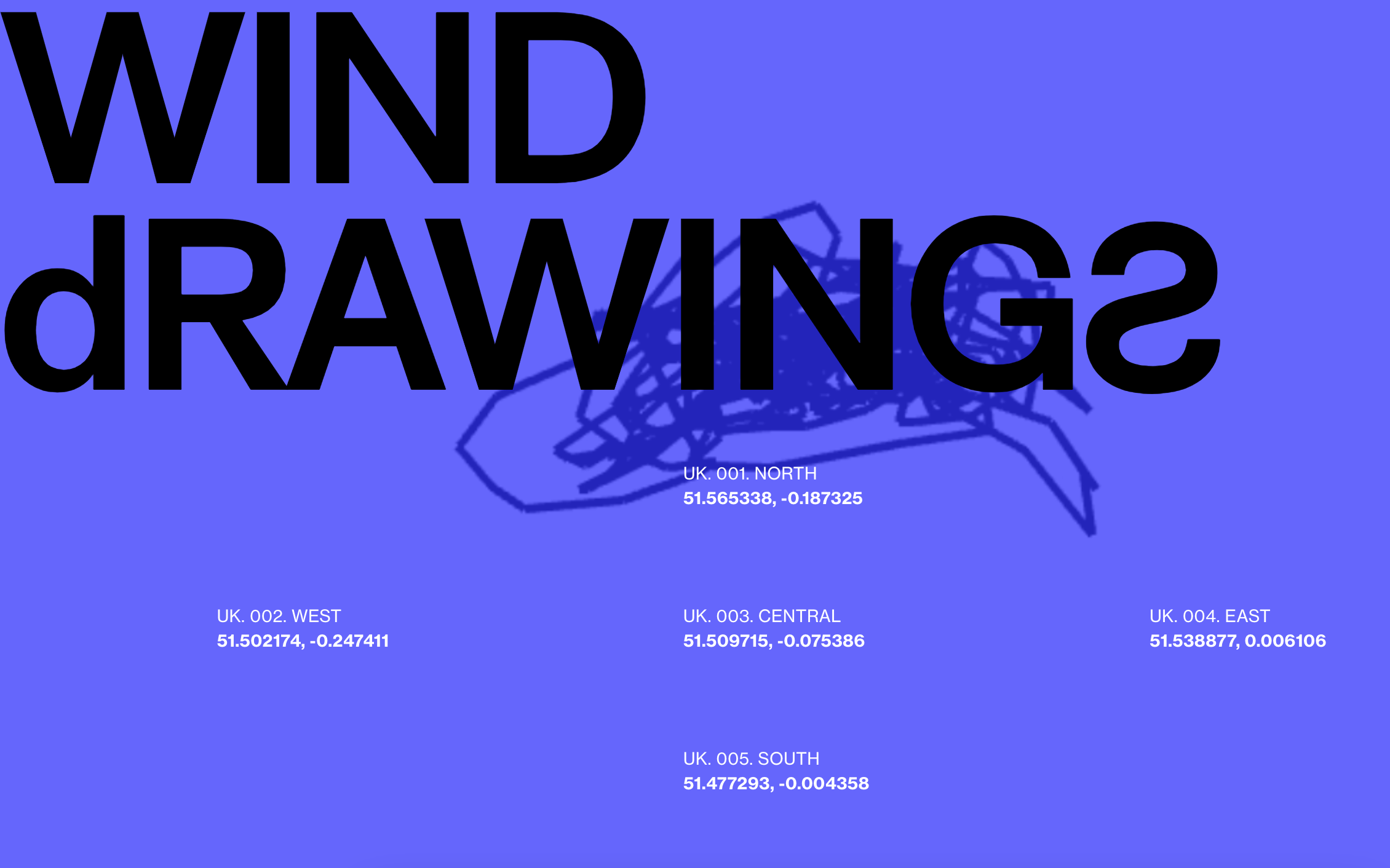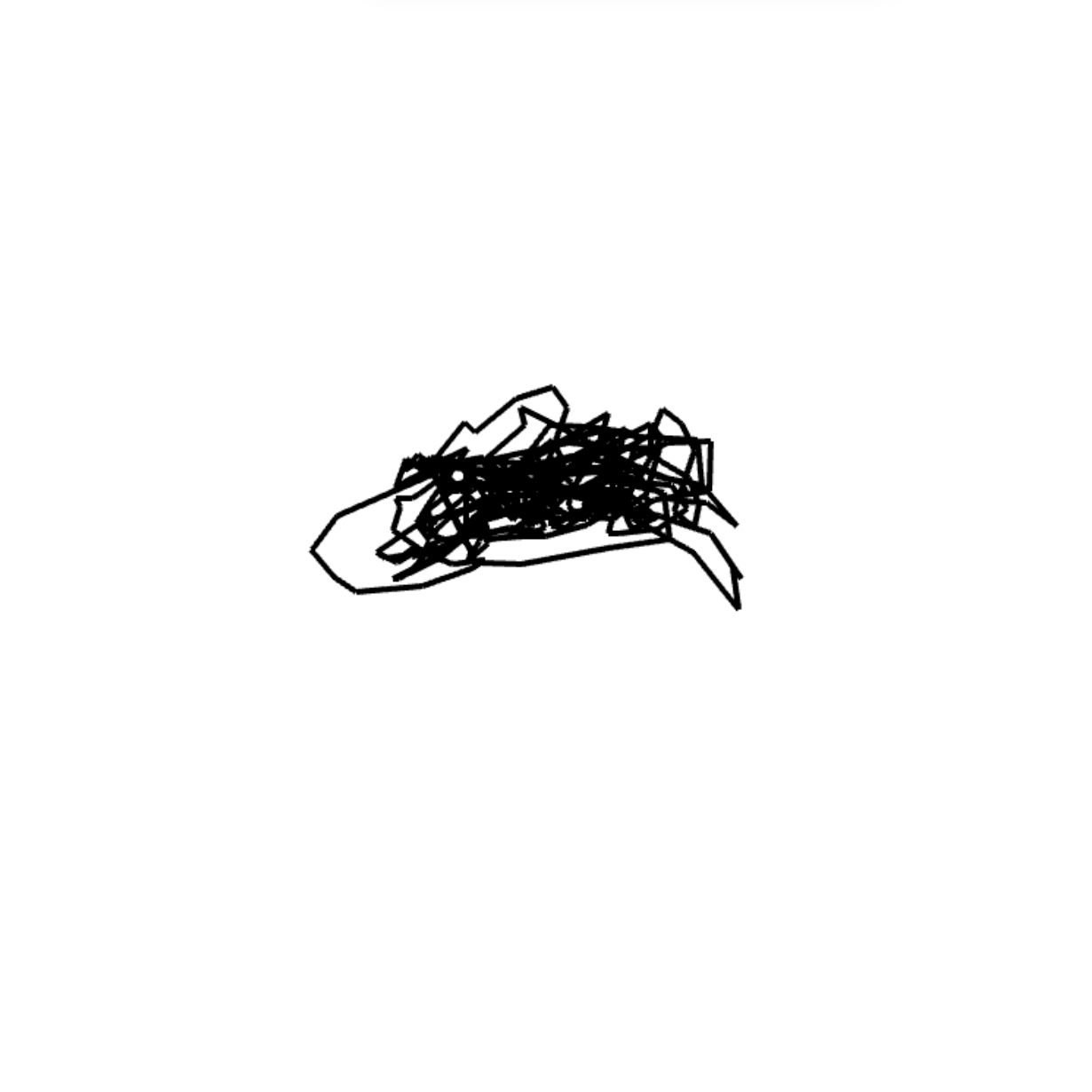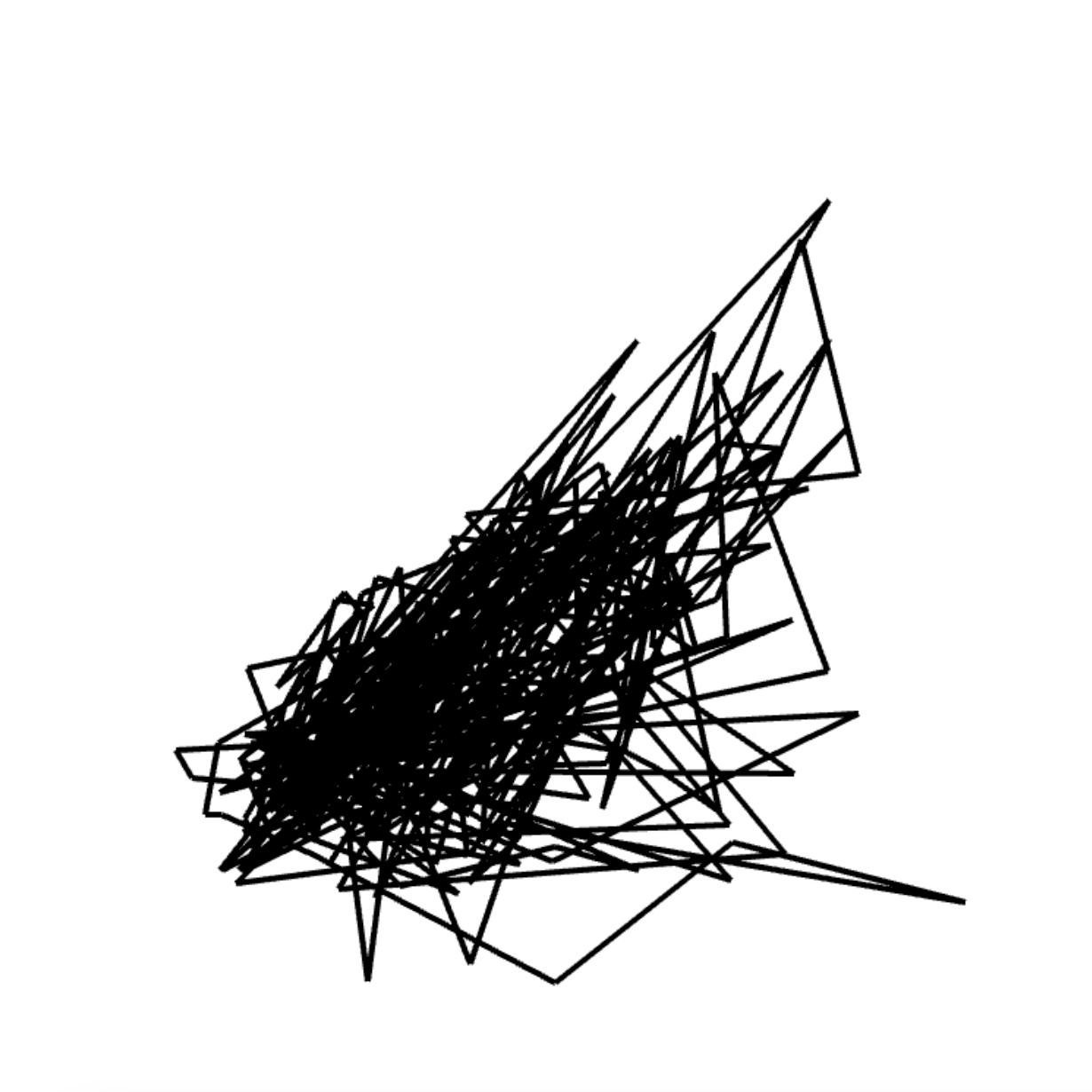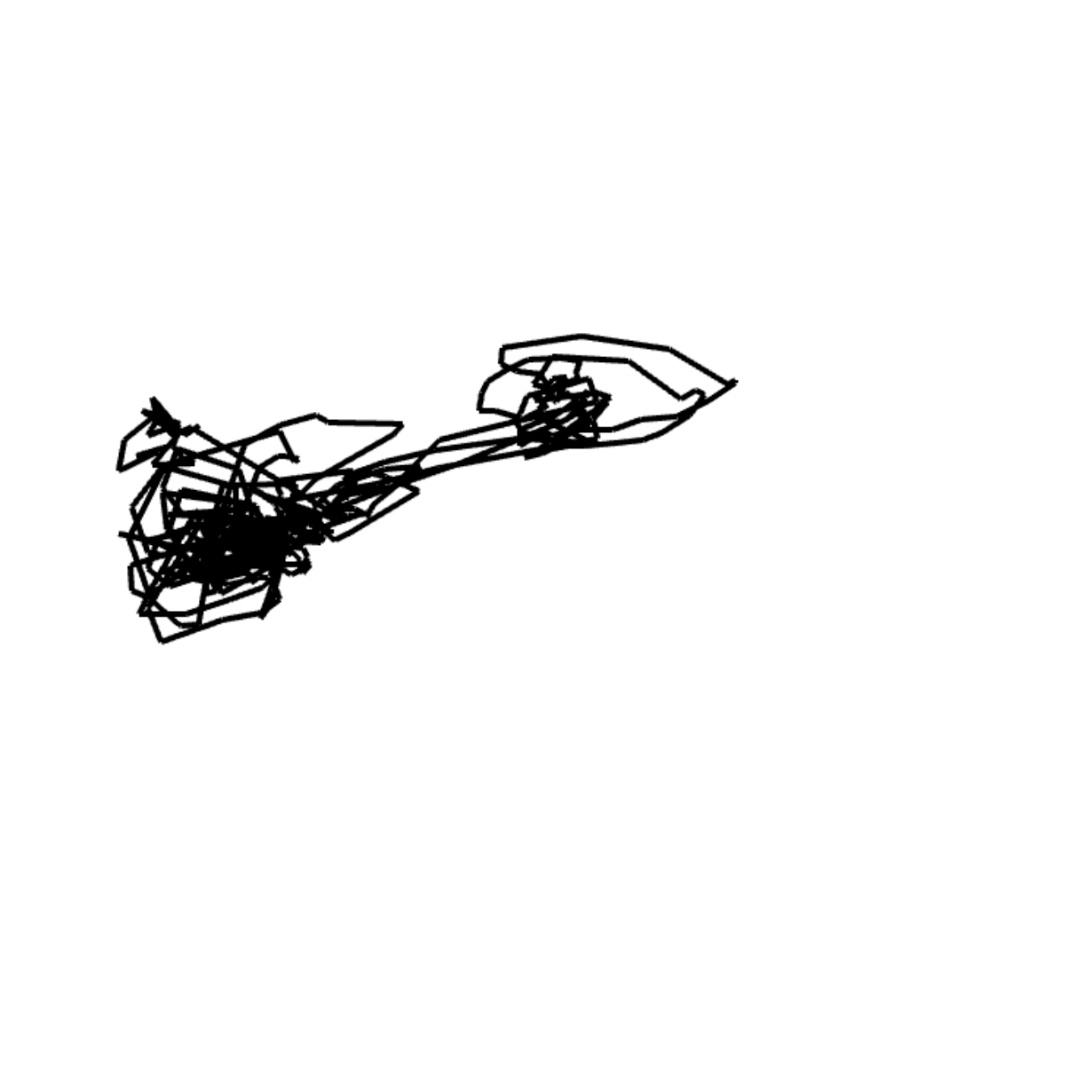Wind drawings
Introduction
This project was created with the intention to explore the This project was created with the intention to explore and give Nature and its more “invisible” side a louder voice and a platform to be expressed as a human art form - drawing.
By Rita Cabrito
Above is the link to my website.
What are these patterns?
I come from a fine arts/ graphic design background, and in my work, I have always been interested in the small details that are easily dismissed by the busy lifestyle of society and to be able to see the beauty in those small aspects of our world.
What I meant by the invisible patterns was, in this case, to give an ‘opportunity’ to nature to express itself in a different method, a more human method.
I chose 5 different locations in London to set up my wind-tracking object and read the wind data. These locations were North, South, Central, East and West London.
Materials and techniques used
I used C++ in openFrameworks to develop this project. I used computer vision technology, more specifically what we learnt in week 12 and 13 in Theo’s Creative Coding class. Colour tracking to focus on one element in the video and then translate the movement into a digital drawing.
Concept/ Goal
My goal for the project is to create art, specifically generative artworks and with these, give people the opportunity to see how much nature has to give even if not visible. I want people to become more interested in connecting with our environment and understand that a lot of current environmental issues are related to the lack of connection that we have with Nature. With this project, by looking at Nature from a different perspective, by giving speechless elements a ‘human’ output, I hope for people to understand its force and amazing potential.
Each generative drawing comes with a written text that connects my artefact with real issues that we are facing in relation to the Planet and the environment. I focus primarily on Technology and Ecologies, Bio-sensing art, Digital narratives and witnessing, and Object-oriented ontology.
Bibliography
Alien Phenomenology by Ian Bogost
https://www.dropbox.com/s/lyc28eoi7sf43uo/Alien%20Phenomenology%2C%20Or%2C%20What%20I%20-%20Ian%20Bogost.pdf?dl=0
A Thousand Ecologies: The Process of Cyberneticization and General Ecology by Erich Hörl
Back to Earth: Systems and Sprouts
https://www.serpentinegalleries.org/art-and-ideas/back-to-earth-systems-and-sprouts/
Data Garden interviews Bio-Art pioneer Richard Lowenberg
https://www.datagarden.org/post/richard-lowenberg-interview
Digital Narratives and Witnessing: The Ethics of Engaging with Places at a Distance by Nishat Awan
Future Art Ecosystems, Issue 1, Art x Advanced Technologies by Serpentine R&D Platform
Instrumental Vision by Rose Woodcock
Personalities without People. Guest Post by Katherine Behar
https://www.theocculture.net/personalities-without-people-guest-post-by-katherine-behar/
Technology and Ecology by David Grierson
https://www.researchgate.net/publication/311674632_Technology_and_Ecology
The Carrier Bag Theory of Fiction by Ursula K. Le Guin
The Force of Things by Jane Bennett
https://www.dropbox.com/s/raabu5xmxfjtdxb/The_Force_of_Things_Bennett.pdf?dl=0#
Sensing Practices by Jennifer Gabrys and Helen Pritchard





































































